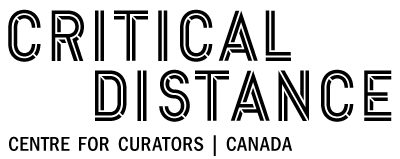PUBLIC ART: Billboard on Shaw by Nadia Myre
June 23, 2018 - August 5, 2018Billboard on Shaw curated by Noa Bronstein with the exhibition Through Lines, presented in partnership with the Koffler Gallery, featuring Indian Act by Nadia Myre.
Through Lines is an exhibition that brings together works of seven artists that challenge notions of redaction, tackling its typical devices of shredding, blacking out, editing, and covering up. Each project featured in this exhibition engages a restorative gesture that speaks to the ways in which history and memory are conceptualized within a contemporary context. Rather than considering redaction simply as a bureaucratic tool or an outcome of state control, these specific approaches enable new forms of knowledge production and remembering, both politically and personally. Contemplating alternative legibilities that might emerge through redaction, the exhibition highlights the spaces of inquiry revealed through acts of obstruction.
Indian Act is on view at 180 Shaw Street, outside Artscape Youngplace, through June to August, 2018.
Nadia Myre’s project, Indian Act (2002), enlisted over 230 individuals to bead over the 56 pages of the Indian Act, creating a visual evidence of the lingering impact of colonization, unheeded contracts and oppressive politics.
Location and hours
Critical Distance Centre for Curators
180 Shaw Street, Artscape Youngplace, M6J 2W5
Admission is always free; building and gallery fully accessible
Google Map
Exhibition is on view June 23–August 5, 2018
Gallery hours are Thursday–Sunday from 12–5 pm and by appointment through August 5th
We are open on holiday weekends unless otherwise noted on our visitor info page here
About the Artist
Nadia Myre is an Indigenous and Quebecois artist from Montreal who is interested in having conversations about identity, resilience and politics of belonging. A graduate from Camosun College (1995), Emily Carr (1997), and Concordia University (M.F.A., 2002), Myre is a recipient of numerous awards, notably Banff Centre for Arts Walter Phillips Gallery Indigenous Commission Award (2016), Sobey Art Award (2014), Pratt & Whitney Canada’s ‘Les Elles de l’art’ for the Conseil des arts de Montréal (2011), Quebec Arts Council’s Prix à la création artistique pour la region des Laurentides (2009), and a Fellowship from the Eiteljorg Museum (2003). Recent accomplishments include Tout ce qui reste / Scattered Remains (Montreal Museum of Fine Art, 2017), Decolonial Gestures or Doing it Wrong? Refaire le chemin (McCord Museum, 2016) and commissions for new work: the Quebec Room carpet design (2015) for Canada House in London, England (with Karen Spencer), Orison (galerie Oboro, 2014), Formes et Paroles (Musée Dapper, Senegal, 2014), and Sakahàn (National Gallery of Canada, 2013). As well as having participated in international biennales (Shanghai 2014, Sydney 2012, and Montreal 2011), Myre’s work has featured in prominent group exhibitions such as Changing Hands 3 (Museum of Art and Design, New York, NY), Pour une république des rêves (CRAC Alsace – Centre Rhénan d’Art Contemporain, Altkirch, FR), Le temp du dessin (Ensemble Poirel, Nancy, France), Vantage Point (National Museum of American Indian National Mall, Washington, DC), It Is What It Is (National Gallery of Canada), and Femmes Artistes: L’éclatement des frontières 1965-2000 (Musée national des beaux-arts du Québec, QC). Her work has received accolades from the New York Times, The Washington Post, and Le Devoir, and has been featured in ARTnews, Canadian Art, Parachute, American Craft, C Magazine, and Monopol. Her works may be found on permanent exhibition at the Montreal Museum of Fine Arts, National Gallery of Canada, Musée National des Beaux-Arts du Québec, Canadian Museum of History, and the Musée des civilizations (Quebec).
![]()
![]() Image: Nadia Myre, Indian Act, 2002. 8 x 8 foot billboard at 180 Shaw Street in Toronto’s West Queen West neighbourhood. Photo by Toni Hafkenscheid.
Image: Nadia Myre, Indian Act, 2002. 8 x 8 foot billboard at 180 Shaw Street in Toronto’s West Queen West neighbourhood. Photo by Toni Hafkenscheid.
About the Curator(s)
Noa Bronstein
Noa Bronstein is a curator and writer based in Toronto. Her practice is most often focused on considering issues around place and space-making and thinking through how artists disrupt and subvert systems including those registering across social, political and economic structures.
Find out more